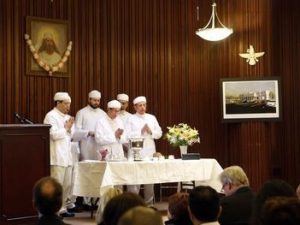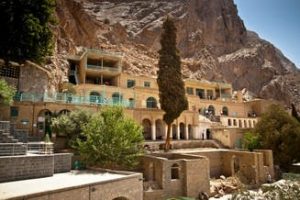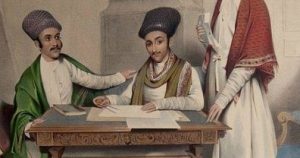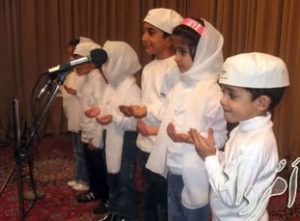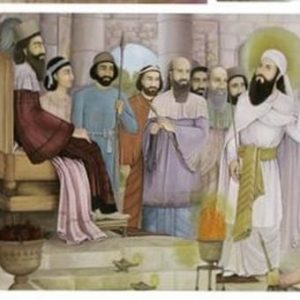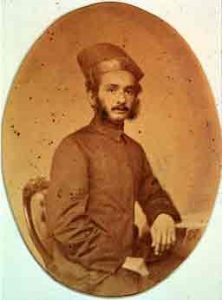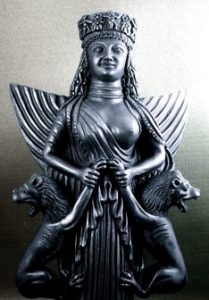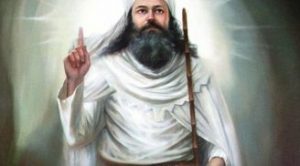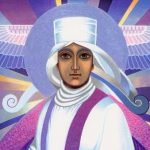The Core Essence: Find yourself. Do so by consciously taking the decision to walk in the path of Righteousness. What is righteousness? It is your original, core essence and exists within you by default. The ‘Righteous instinct’ reposes within you as the spark of the Divine. Given form, it is the highest mind within you defined as VohuManah. If you rediscover this within, then what you think and thence speak and in what you do – will be just, will be appropriate, will be right regardless of perspectives of good and bad. This is the state of the highest good. We call it ‘Vahisht’.
‘Take the decision of being good unto others and so be fair into yourself. Therein is your true identity which is a spark of the Divine’.
The Divine can be experienced in all you do. The only stipulation here is to do it purely for yourself unto others.
Every Ritual is Valid. Ritual in the hands of him or her that is innately good, is a priceless and enabling tool. Ritual serves to expedite understanding of the spirit. Ritual followed with heart and with passion serves only to elevate and redeem the worshiper.
Ritual in the hands of those who seek material result is a tool of power. Power is rooted in cause and its effect thereon. Ritual used to bring social good toward a material end succeeds; yet, there will always be a book to be balanced.
Why does rituals turn into dogmas for some religions (Abrahamic)?
It has oft been said that a rolling stone gathers no moss. This is strictly not true. Take the case of a flake of snow, lighter than the lightest feather; beautiful, stark; ethereal. It falls from the sky; nay, for it floats through the cold air and settles down amongst the remains of its compatriots, all snow; all white. In turn, these cling together and turn into particles of ice around which gathers more snow. In time, this turns into a large clump and upon a slope, begins to roll. What was once a flake gathers more of itself around its core; grows in physical size. Lose the ethereal, weightless beauty; lightness turns into solid mass; turns into a snowball. Down the slope it gathers more of itself and grows larger. Its core is of a flake. Yet, from a flake it has turned into a boulder of snow. A thing of beauty now has lost its subtle existence; hardened into matter and this carries on inexorably. It gathers speed and gathers more mass and now, it is no longer the heavenly ethereal thing; for it is solid weight traveling down faster; and will eventually meet something its way. There is going to be a catastrophic collision with something that will reduce the snowball into its original flakes. In this process, it will take lives and draw deep and painful furrows in its path.
Such is with some religions and rituals, especially the Abrahamic religions. A thing of beauty, through time, gathers believers and traditions. It’s inner core is lost in its outer traditions and culture, picked up along the way. This is how ritual takes over religion; what was once spirit, pure and simple, is turned into dogma and unshakable law. Dogma and law are meant to arrest growth; they work to preserve what is known; and abjure conscience itself, which explores the unknown. In such a situation, thought, free thinking, free exploration and freedom of choice is forbidden. Liberty is lost upon the alter of belief. Unless the intrinsic culture of a nation, people and race is reformed, its evils will only grow. Evil cannot be suppressed. No container possesses such tightness so as to restrain evil, for evil reposes as ideas put into nefarious action. It is the mind that must be amended, so as to contain evil. To reform a person, one must cleanse the mind with examples both kind and cruel.
As far as Zoroastrianism is concerned, its inner core reposes intact. It is known as the “Daena Vangehui”. To find that, you must also simultaneously find yourself. You must find what you are; what it is that limits you and beyond these limits, the infinity that beckons. What you will discover is not dogma or the self-serving theosophy of knowledge. You will discover only your own simplicity; discover the quiet joy of restoration and redemption thereon.
Do not be swayed by the politics of religion. Liberation reposes not in debating politics; religion is politics. Liberation reposes in the soul of him or her that journeys through life and rediscovers compassion and the will to do what is in the greater good.
The highest form of worship then is to live for others. The Daena Vangehui is precisely a constitution for mankind because it finds the Divine within all, reflected within the self. Which is why it is a ‘doing mandate’ and the resultant Zoroastrian structure is essentially philanthropic in its core essence. Ritual plays a very deep part in this and this is why Zoroastrians are loved everywhere.
Even if a Zoroastrian abuses, it is with the noble and absolutely crucial need to retain the purity of their ancient ritual. To do so is their God given right and may every success attend their endeavours. Zoroastrianism has endured because our Zarathushti predecessors did not negotiate upon ritual and preserved these reverently. These are passed down through untold generations. This is a unique aspect of Zoroastrian history that no one speaks of.
Good thoughts. Good words. Good deeds. These are expressions of ceaseless self-enquiry and introspection. For all action flowers from the ‘self’. This is not an easy path in this day and age. And yet, the slightest inclination to know the depths of the words “Shyaothnam Angeush Mazdai” brings forth in inner contentment that is beyond measure of every yardstick of material.
“Shyaothnam Angeush Mazdai”. Translates loosely as – “The Deeds of Life unto Mazda”. What are the deeds of life? Adding fragrant wood to the Afarghan is as much a deed of life as is driving a steam engine through the wilderness of 19th century.
Having a drink with friends one evening accompanied by the joy of filthy language and bawdy jokes is as much a deed into Mazda as is commuting for work every day, sweating and swearing at the niggers stamping upon your toes.
To do all of this in one’s possession of why one does it all, for the simplest reason of self- sustaining and for finding happiness without judging another who does a different thing for the sake of the same completion and happiness is the “Deed unto Mazda”.
To do something for the sake of doing it is a deed unto Mazda. To pretend for the sake of pretence is a deed unto Mazda, for in that pretense, there are seeds of honesty.
The deed unto Mazda is the instinctive human deed that wishes no evil upon anyone and desires good for others so that the self may be quietly content.
To need to be happy; to do unto others and bring completion upon the self is the Deed unto Mazda.
Ushta Te













